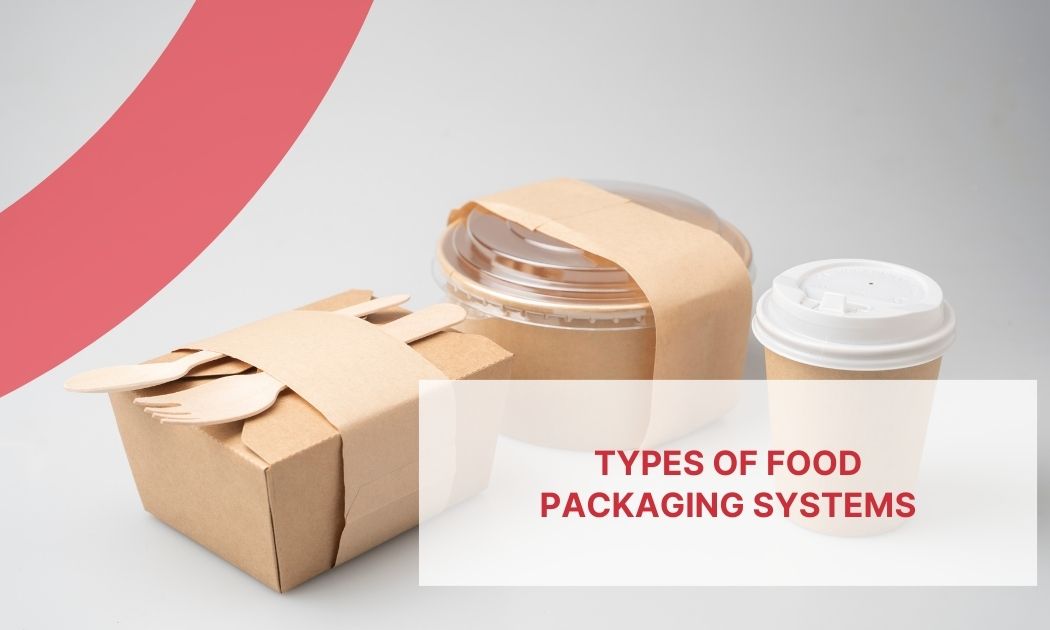Food packaging can be made in various ways, both in terms of the materials used and the systems. Here we provide more information for you to know more details.
Types of food packaging systems
Food packaging systems are also related to the material used. Although plastic film is the most common material, kraft paper, aluminum, glass or cardboard are also used in some cases. We say this because, depending on the context, the type of machine needed is one or the other.
Food packaging has specific conditions, because the food can be either perishable or non-perishable. And sometimes the pallets contain bottles, crates or bulk product. What we can say is that there are a number of options available
There are basically three possibilities: automatic packaging, semi-automatic packaging and manual packaging. It is worth checking the advantages and disadvantages of each system:
Automatic food packaging
Automatic food packaging systems work with automated machines that take care of the entire packaging process, from start to finish. Here the type of machine that adds value is the pallet stretch wrapping machine. Special mention should be made of the rotary ring wrappers. They offer several advantages:
- They have the highest wrapping speed, also used for foodstuffs. Regardless of whether it is food or beverages, there are stretch wrapping machines that can wrap up to 160 pallets per hour. This is good for industrial or distribution companies with intensive production.
- Quality wrapping. This is significant, because gauge controls often reject pallets as being defective. Automatic machines, when properly calibrated, produce an optimum result and can reduce the likelihood of breakage as well.
- There are fewer options for human error, which improves productivity, but it also reduces the likelihood of workplace accidents.
- Resource optimization. The reason is that automatic machines make the most of the raw material, stretching it and making the stretch film go further. This is another way to reduce costs.
However, the main negative element that you should consider is the cost, which is higher than other machines. An automatic packaging system requires that you make previous investment.
Semi-automatic packaging
Semi-automatic packaging is an option halfway between 100% automatic and manual. It is an interesting option, especially for SMEs, but it has advantages and disadvantages. In this type of machines we have to highlight the strapping machines. Take a look:
- Most of the system works automatically, except for the first part. Therefore, it is easy to cut down the time required to wrap a pallet. This is a good thing if your ultimate goal is to improve processes.
- The cost of the machines is lower than that of automatic machines, and they are also easier to use. If you have an SME or if your activity is not so intensive, this is an option that may be of interest to you.
- Wrapping costs are lower, since the machine is cheaper than 100% automatic systems, but they are still much lower than in manual systems. It is worth bearing this in mind in order to make an informed choice.
- The possibility of human error is reduced, since semi-automatic packaging systems only require input in the initial stage of packaging. The rest of the process is monitored, so that the risk is close to zero.
The disadvantages are that you need human intervention and a certain prior qualification. On the other hand, it is interesting to work out whether worker intervention is convenient for you or not.
Manual packaging
Manual packaging is the traditional system, which today is used for handmade products. In the case of food industries or mass production, it is a system with several disadvantages; we highlight the following:
- Manual packing takes longer than automatic packing. The reason? That the entire process has to be managed from start to finish by one or more workers.
- Each pallet requires much more work, since all the steps have to be taken using physical strength. And one person is often not enough, because it is not physically possible.
- The chances of occupational accidents multiply. Not surprisingly, palletizing is a complex operation and fractures or back problems are common. For this reason, it is not the most recommended system available.
- Finishes are generally of poorer quality. Not surprisingly, it cannot be closed with the same level of detail, so the chances of increased returns in controls are higher.
It is true that the cost, in the short term, is lower, because no prior investment is required. But you should carefully consider if this is what matters most to you, because in the long run it may not pay off.
What should you consider when choosing a food packaging system?
The things to consider when deciding whether you are interested in one food packaging system or another are simple. Take note, because they will interest you:
- Costs. You have to make a calculation of how much a certain system costs you, but we recommend that you do this in the long term. It is not valid to make comparisons between a worker and a machine, and compare their cost over a day or a month. This way, you will know what is best for you.
- Workload. Calculating the number of pallets to be managed is equally important. If you don’t have accurate information about your workload, you can run into problems.
- Finishes. The quality of finishes when palletizing is always important, but with food it is crucial. You must be sure that the cargo is not rejected, but also that it is kept in perfect condition.
In conclusion…
Food packaging can be done in several ways, either automatic, manual or semi-automatic. It is a good idea to know the different options, as well as their advantages and disadvantages. At Movitec we provide you with many interesting references
Contact us for more details!


